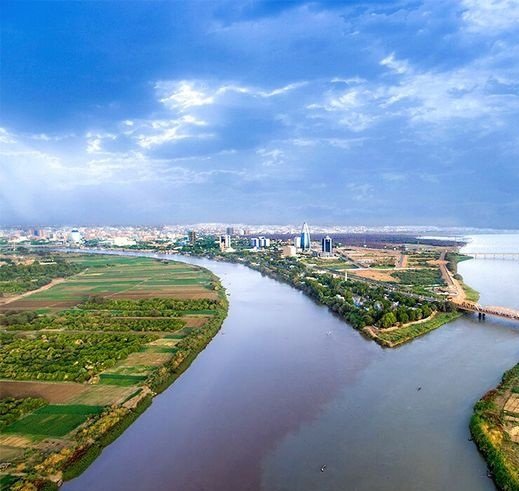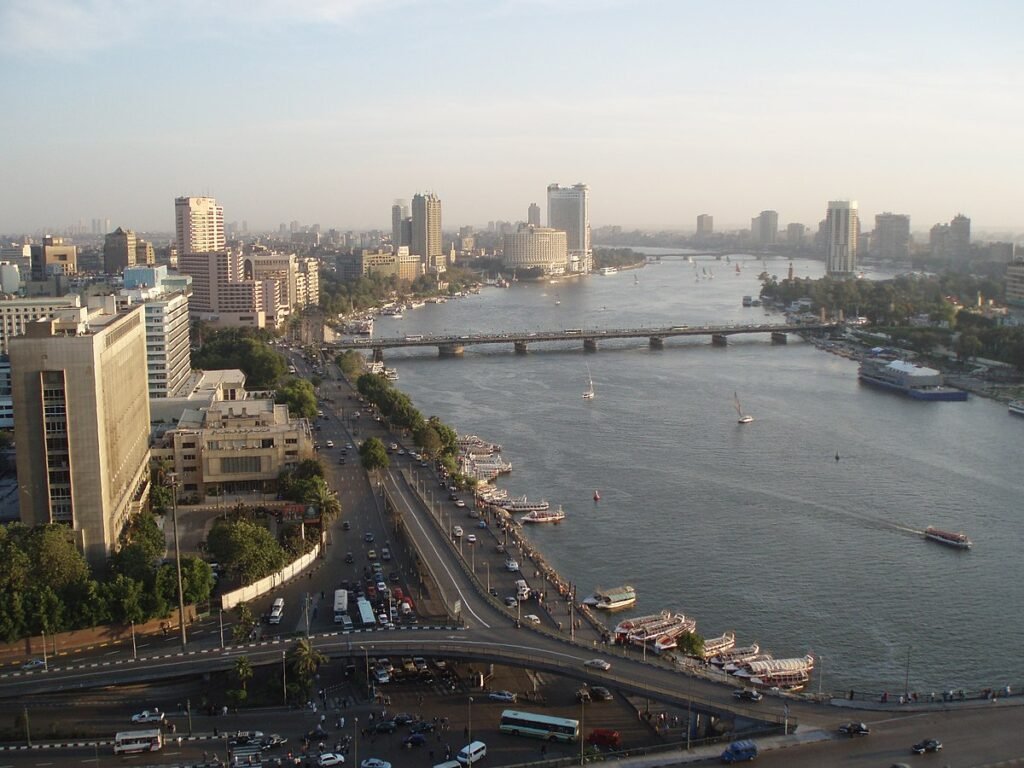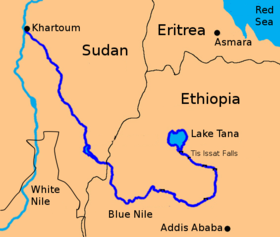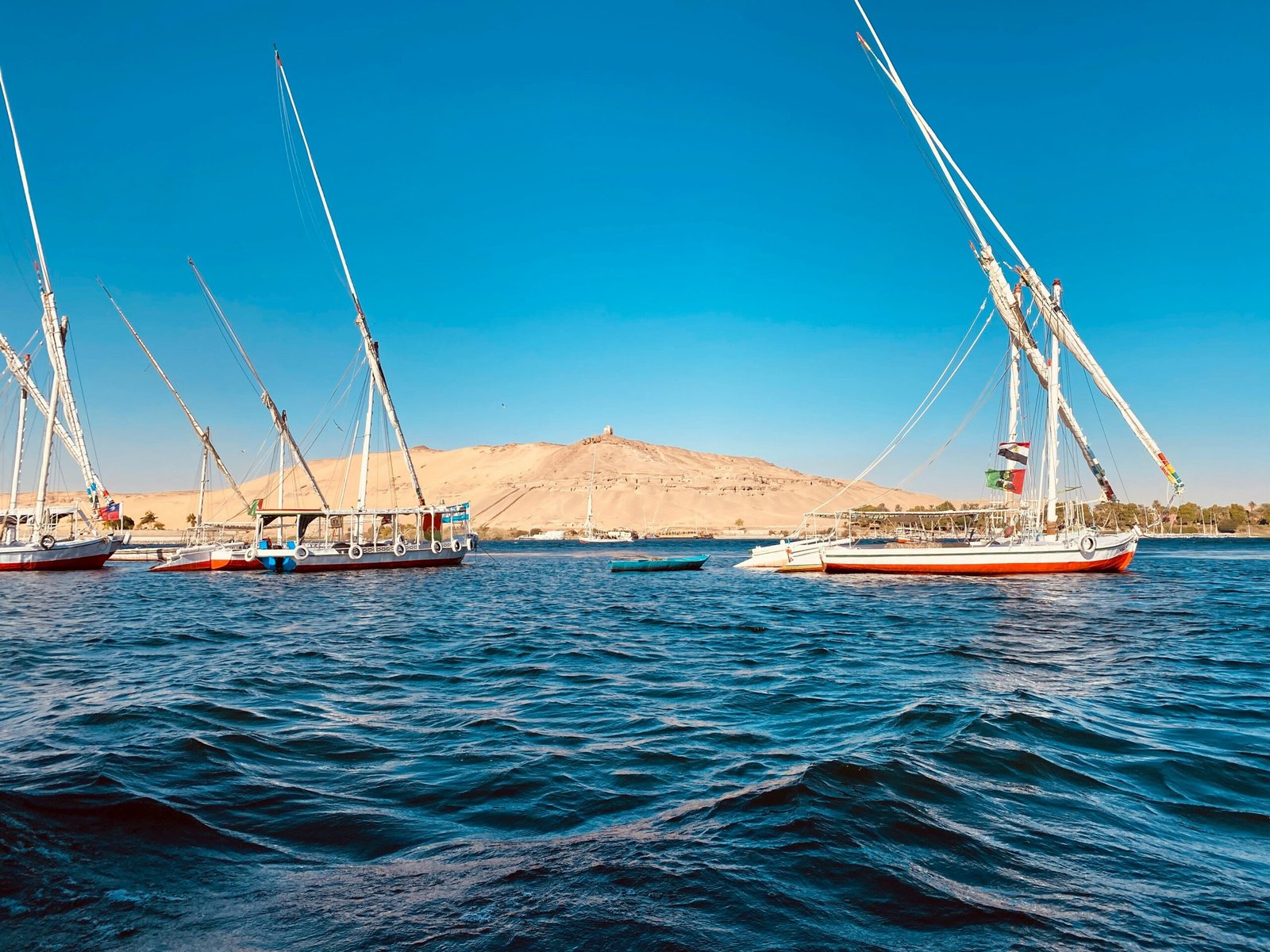The Nile River, one of the world’s most iconic waterways, is formed by the convergence of two main branches: the White Nile and the Blue Nile. These two rivers come together in Sudan, creating the Nile, which then flows northward through Egypt before eventually emptying into the Mediterranean Sea. Let’s take a closer look at the White Nile and the Blue Nile, their origins, and their significance in the region.
The White Nile, named for the pale color of its water, originates from Lake Victoria in East Africa. Stretching for over 3,700 kilometers, it winds its way through countries such as Uganda, South Sudan, and Sudan. The sediment deposition in the river gives it its characteristic light hue. As the White Nile meanders through these regions, it serves as a vital water source for both humans and wildlife, sustaining ecosystems and supporting agricultural activities along its banks.
On the other hand, the Blue Nile, named for the vibrant blue color of its water, originates from Lake Tana in the Ethiopian Highlands. It extends for approximately 1,450 kilometers, passing through Ethiopia and Sudan. The Blue Nile gets its distinctive color from the silt and sediment it carries from the Ethiopian Highlands. This sediment-rich water is a significant contributor to the fertility of the Nile River Basin, making it an essential source of nutrients for agriculture in downstream regions.
The confluence of the White Nile and the Blue Nile occurs in Sudan, near the capital city of Khartoum. At this point, the two rivers merge, forming the Nile River. From here, the Nile continues its journey northward, cutting through the vast expanse of the desert. The Nile’s course takes it through countries such as Egypt, where it plays a crucial role in the nation’s history, culture, and economy.
The Nile River is not only a lifeline for Egypt but also for the millions of people who reside along its course. It provides a vital source of water for drinking, irrigation, and hydropower generation. The river’s fertile banks support agriculture, allowing communities to cultivate crops and sustain their livelihoods. In addition to its practical importance, the Nile holds immense cultural and historical significance, serving as a backdrop to ancient civilizations and inspiring countless myths and legends.
The Nile River’s significance extends beyond the countries it traverses. It has been a subject of fascination and exploration for centuries, attracting travelers and researchers from around the world. Its diverse ecosystems support a wide range of flora and fauna, making it a haven for biodiversity. The river also offers opportunities for recreation, with activities such as river cruises and wildlife safaris drawing tourists to experience the beauty and tranquility of the Nile firsthand.
the White Nile and the Blue Nile are the primary sources of the Nile River. The White Nile originates from Lake Victoria, while the Blue Nile originates from Lake Tana. These two rivers converge in Sudan to form the Nile, which flows northward through Egypt before emptying into the Mediterranean Sea. The Nile River is not only a vital source of water and agricultural wealth for the region but also holds immense cultural and historical significance. It continues to captivate people’s imaginations and remains a symbol of life and prosperity in the countries it touches.
النيل الأبيض والنيل الأزرق هما الفروع الرئيسيتين لنهر النيل، ويشكلان مصدره الرئيسي. يجتمع النيل الأبيض والنيل الأزرق في السودان ليشكلا النيل الكبير الذي يتدفق شمالًا عبر مصر ويصب في البحر الأبيض المتوسط.
- النيل الأبيض: ينشأ من بحيرة فيكتوريا في شرق أفريقيا، ويسمى النيل الأبيض للون الباهت للمياه الناتجة عن ترسيب الرواسب في النهر. يمتد النيل الأبيض لمسافة تزيد عن 3,700 كيلومتر قبل أن يلتقي بالنيل الأزرق في السودان.
- النيل الأزرق: ينشأ من بحيرة تانا في جبال الأبيش في إثيوبيا، ويسمى النيل الأزرق نسبةً للألوان الزرقاء الزاهية للمياه الناتجة عن الطمي والرواسب المحمولة به. يمتد النيل الأزرق لمسافة تقدر بحوالي 1,450 كيلومتر قبل أن يلتقي بالنيل الأبيض في السودان.
بعد انضمام النيل الأبيض والنيل الأزرق في السودان، يستمر النيل الكبير في تدفقه شمالًا عبر الصحراء ويعبر العديد من البلدان بما في ذلك مصر، حيث يلتقي بالنيل الأبيض في الخرطوم. يعتبر النيل الكبير مصدرًا هامًا للمياه والثروة الزراعية في المنطقة، ويوفر مصدرًا حيويًا للحياة للملايين من السكان على طول مجراه.
بعد مرور النيل بالسودان، يمر عبر دولة مصر قبل أن يصب في البحر الأبيض المتوسط. وبالتالي، الدول التي يمر بها النيل بعد السودان هي:
مصر: يمتد النيل عبر الأراضي المصرية لمسافة تقدر بحوالي 1,550 كيلومتر قبل أن يصب في البحر الأبيض المتوسط. النيل يمثل جزءًا هامًا من تاريخ وحضارة مصر، ويوفر مصدرًا حيويًا للمياه العذبة والزراعة في البلا
على طول نهر النيل في مصر، توجد بعض البحيرات والسدود التي تؤثر على تدفق المياه وتوزيعها. إليك بعض الأمثلة على البحيرات والسدود في مصر:
- بحيرة ناصر: تقع في شمال مصر بالقرب من مدينة أسوان، وهي نتاج سد العاصمة العالي على النيل. تشكلت البحيرة بعد إنشاء السد في الستينيات، وتعتبر بحيرة ناصر أكبر بحيرة مصرية.
- بحيرة ناصر الصغرى: تقع أيضًا في شمال مصر بالقرب من مدينة أسوان، وتشكلت بفعل سد السد العتيق. تعتبر بحيرة ناصر الصغرى أحد فروع البحيرة الكبيرة وتمتد عبر منطقة واسعة.
- سد السد العتيق: يقع في النوبة العليا بالقرب من أسوان، وهو أحد أقدم السدود في مصر. يستخدم السد للتحكم في تدفق النهر وتخزين المياه.
- سد أسوان: يقع في مدينة أسوان وهو أحد أهم السدود على نهر النيل. تم بناء السد في الستينيات والسبعينيات وهو يوفر التحكم في تدفق المياه وتوليد الكهرباء.




النهر الاول – النيل الابيض
النهر الثاني – النيل الازرق
